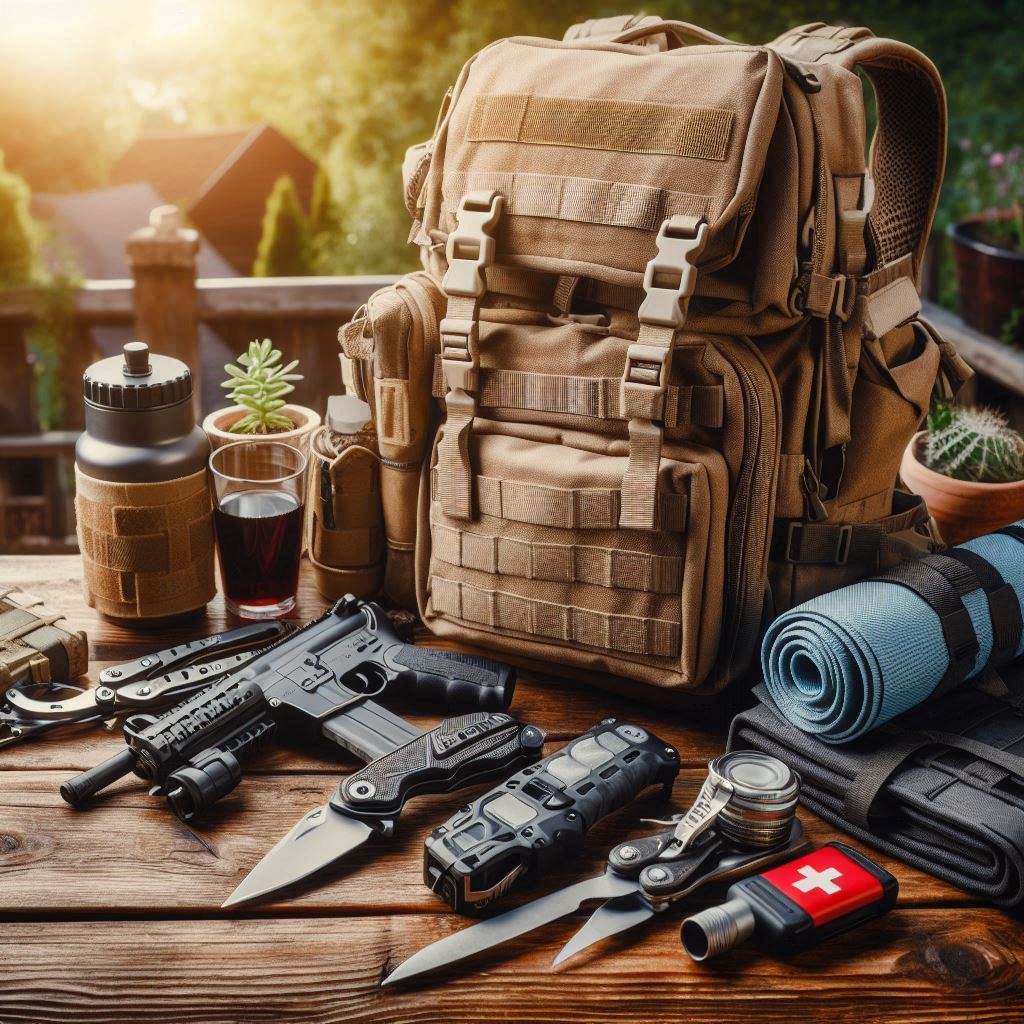Tactical and survival gear are often discussed together because both play important roles in preparedness and self-reliance. While they share some similarities, tactical gear and survival gear are designed for different scenarios and serve distinct purposes. Understanding these differences will help you choose the right equipment based on your goals, environment, and challenges.
What Is Tactical Gear?
Tactical gear refers to equipment designed for military, law enforcement, and high-stakes operational scenarios. Its focus is on functionality, durability, and precision. Tactical gear is crafted to support tasks that demand quick thinking, efficiency, and situational awareness under extreme conditions.
Durability is one of its defining traits, as tactical gear uses materials like reinforced nylon, carbon fiber, and high-grade polymers to withstand harsh environments and prolonged use. Each piece is purpose-driven, featuring designs like modular attachment systems (MOLLE) for customizable loadouts. Tactical gear often emphasizes stealth with muted colors, such as black, tan, or camouflage, and may include advanced features like night vision, ballistic protection, or GPS integration.
Some common examples of tactical gear include plate carriers, body armor, tactical boots, utility belts, and communication devices. Though originally developed for military and law enforcement use, many outdoor enthusiasts and preppers have adopted tactical gear for its ruggedness and versatility.
What Is Survival Gear?
Survival gear, on the other hand, is designed to sustain life during emergencies or in wilderness environments. It focuses on meeting basic needs, such as shelter, water, food, fire, and safety. Survival gear prioritizes practicality and simplicity over advanced features, making it accessible for people with limited training.
Unlike tactical gear, survival gear is compact and lightweight, ensuring it can be carried for long periods. It often incorporates versatile tools that serve multiple purposes to reduce weight and maximize efficiency. For instance, a multi-tool can handle tasks ranging from cutting and sawing to opening cans.
Examples of survival gear include multi-tools, water filters, fire-starting kits, emergency shelters, first aid kits, and non-perishable food. It is essential for outdoor adventurers, hikers, campers, and preppers, as well as anyone preparing for emergencies like natural disasters or SHTF (Stuff Hits The Fan) scenarios.
Key Differences Between Tactical and Survival Gear
While both types of gear are crucial, their differences reflect the specific needs they address. Tactical gear is designed for combat, law enforcement, and professional operations requiring precision and durability. Survival gear focuses on sustaining life in emergencies or wilderness situations by meeting basic human needs.
Functionality is another distinction. Tactical gear often incorporates advanced features, such as ballistic protection or GPS integration, to aid in mission success. Survival gear, by contrast, emphasizes simplicity and practicality, such as fire-starting tools and water purification systems.
The materials used in tactical gear are heavy-duty, meant to endure extreme conditions and prolonged use. Survival gear tends to be lightweight and portable to suit long journeys on foot. Tactical gear also prioritizes stealth with muted colors, while survival gear is often more visible and practical in design.
Tactical gear is primarily used by military personnel, law enforcement officers, and security professionals. Survival gear, on the other hand, is tailored for hikers, campers, preppers, and individuals seeking basic survival essentials.
How Tactical and Survival Gear Complement Each Other
Although tactical and survival gear serve different purposes, they complement each other effectively. For instance, tactical backpacks with MOLLE webbing can carry survival tools like first aid kits or fire-starting supplies. Conversely, survival gear like water filters or multi-tools can be highly useful in tactical scenarios where basic needs must be addressed alongside operational tasks.
When assembling your gear, consider the context of your preparedness. Are you preparing for urban emergencies, wilderness adventures, or security missions? Combining tactical and survival gear offers a balanced setup to handle a variety of situations.
Tactical and survival gear are designed to address different needs but often overlap in functionality. Tactical gear is built for precision, durability, and success in high-stakes scenarios, while survival gear focuses on providing basic life-sustaining essentials during emergencies. By understanding these differences, you can make informed choices when selecting the right equipment for your goals.

Leave a Reply